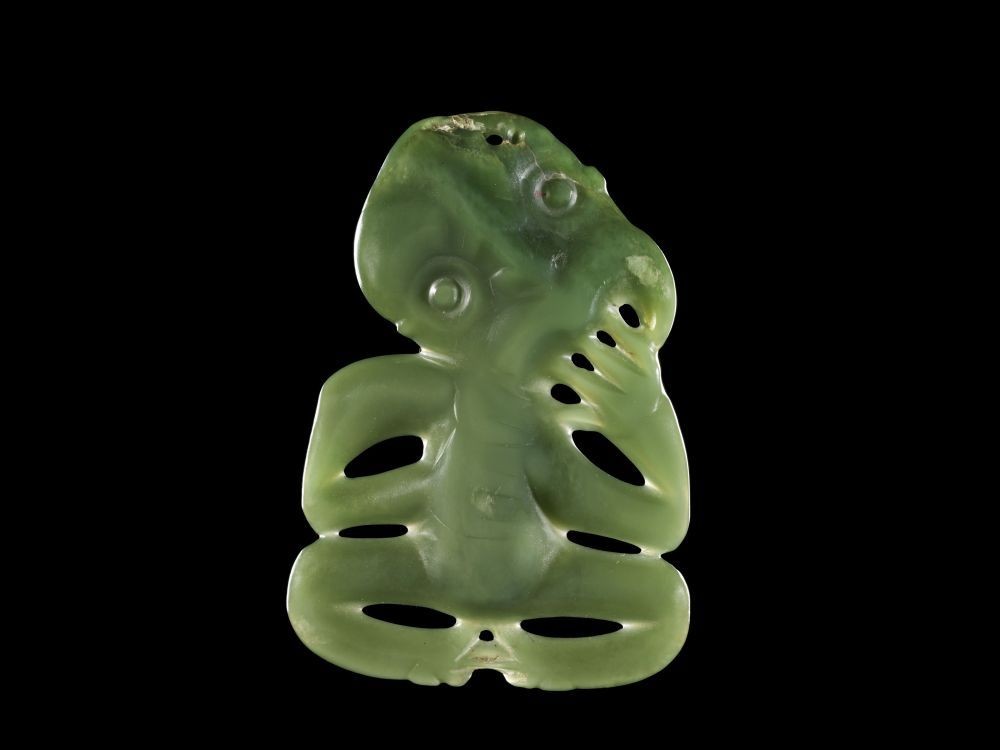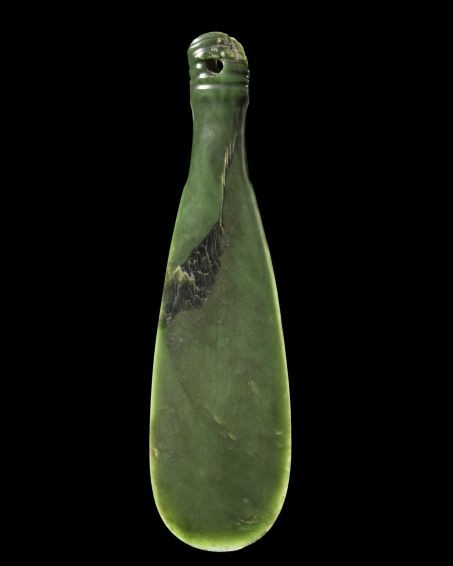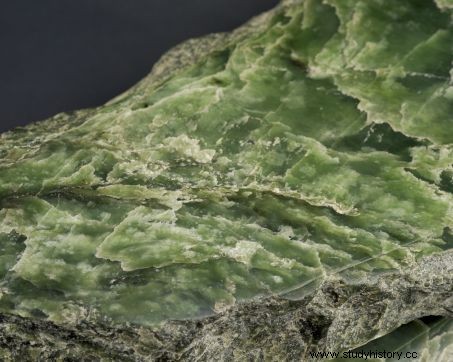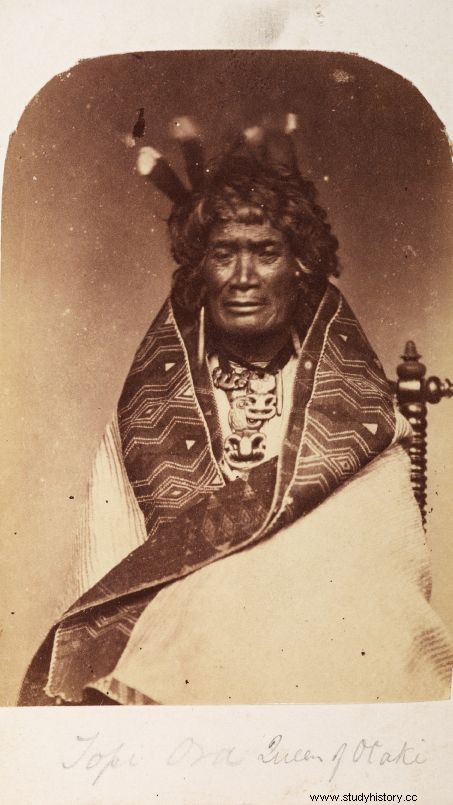An exhibition has just opened at the Quai Branly museum in Paris, where a selection of pieces of jade, the sacred green stone of the Maoris, are presented.

Jade Hei Tiki (anthropomorphic pendant) from Te Papa Tangarewa Museum, New Zealand.
New Zealand Maori gold is a green stone:the Pounamu . Symbol of strength, prestige, it is at the heart of the culture of the inhabitants of Aotearoa , as they call this island of Oceania. It is in these blocks of nephrite, bowenite or jade that the ancient Maoris cut and polished their famous ornaments:the hei tiki , anthropomorphic pendants with eyes sometimes decorated with abalone, or the mother , weapons symbolizing the power of the chiefs. The latter are short-handled clubs that were held in the hand during ceremonies, and which were used to smash the skulls of enemies during combat. So many pieces from the collections of the Museum Te papa Tongarewa, of Wellington, the New Zealand capital, and honored at the musée du quai Branly-Jacques-Chirac, in Paris, from May 23 to st October 2017.

A jade mere, a short-handled club, symbol of mana, meaning power and fame. © Kura Pounamu / Museum of New Zealand.
It is precisely by a Taonga , one of these blocks of stone erected to the rank of sacred treasure, that visitors are welcomed. "Hard to find, hard to mine blocks as Stephane Martin, President of the Musée du Quai Branly, explained. With their dendritic decorations, the four stones presented (hine kaitaka) , seem to draw the landscapes of the large South Island of New Zealand, whose Maori name Te Wai Pounamou ("the waters of the green stone") refers to the unique region in which they are found.

Detail of a pounamu (rock) of the Kawakawa variety. © Kura Pounamu / Museum of New Zealand.
Because it is at the bottom of riverbeds, or in the form of rocks, that their deposits are sought, like Tangiwai , the stone born from the tears shed by the god Tama-ki-te-rangi when he was looking for his kidnapped beloved.

A site in pounamu, in the big south island of New Zealand. © Kura Pounamu / Museum of New Zealand.
Over the five spaces of the exhibition, covering several centuries, the visitor is invited to follow a journey punctuated by 250 ancient or contemporary objects carved from these precious minerals. “Wearing a pounamu is an object of distinction recalls Nicolas Garnier, anthropologist in charge of the Oceania collections at the Quai Branly museum. And for it to have value, it must be transmitted. What is done from generation to generation.

Te Rangi Topeora. A Maori dignitary wearing hei tiki photographed around 1860. © Kura Pounamu / Museum of New Zealand.
Maori culture has experienced something of a renaissance since the 1970s, hence the revitalization of moko , traditional facial tattoos, plant fiber ceremonial capes, and the rediscovered importance of the power of the pounamu .
The Quai Branly Museum
222 University Street
Paris 75343 Paris Cedex 07
Information:01 56 61 70 00
www.quaibranly.fr
